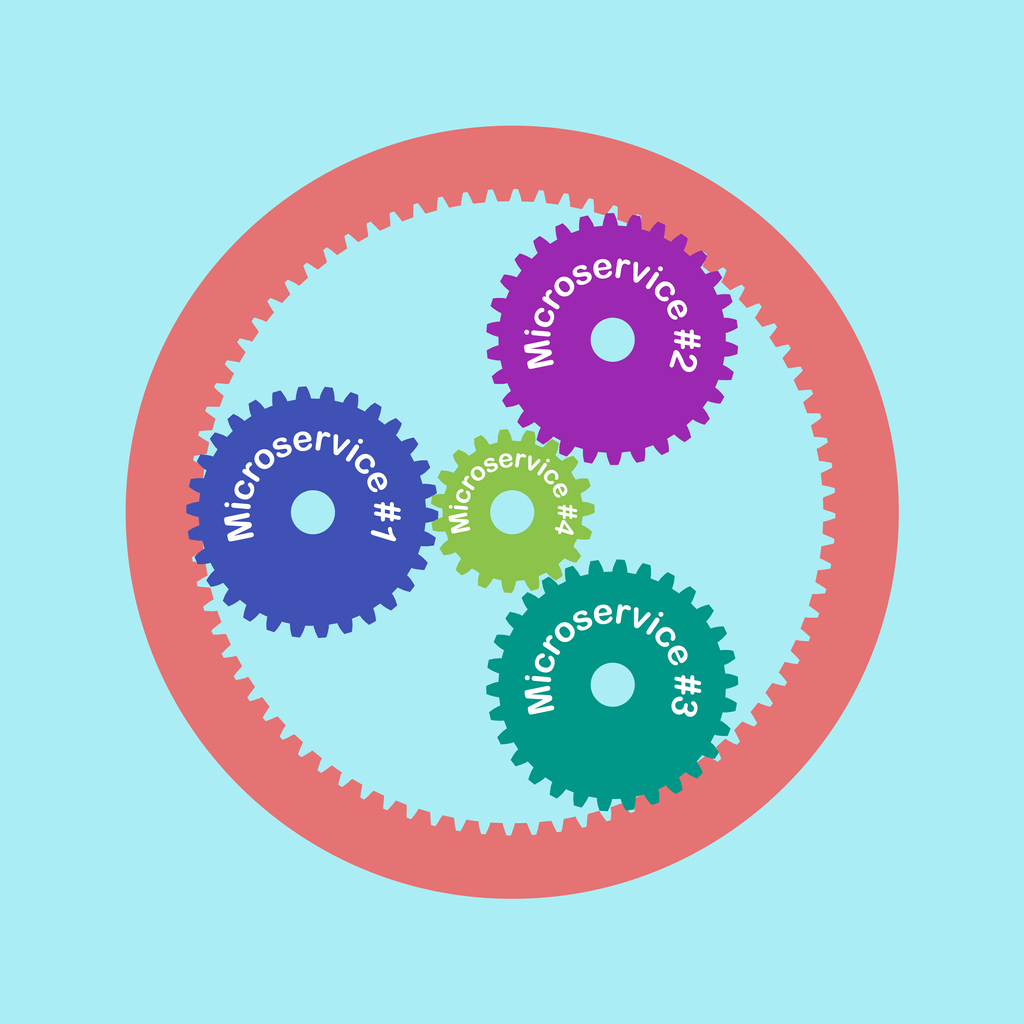
Microservices solve problems of clumsy all-around applications. The isolated, functional modules with APIs are simple to develop but can be complex to deploy.
IT circles primarily talk about all-around applications. Meanwhile, microservices has become a new and mysterious term being passed around. Should you pick up this trend in 2022?
How Do Microservices Work?
Microservices are parts of an application—single-function modules that work independently. From a technical point of view, each of them runs its own process, occupying its own piece of memory storage. Although they remain integral components of one application, you can install them on separate computers or servers.
The majority of microservices speak to each other through REST API, mostly communicating in a decentralized way. Rarely, one microservice would play a hub role, collecting and forwarding messages from the others.
Advantages of Using Microservices
If you often hear about bugs bringing e-commerce or SaaS businesses to a halt for hours, microservices may offer a solution. Their isolated nature means you can precisely locate a failure in a workflow. After fixing it, it requires less effort to deploy only a microservice instead of an entire application.
Isolation also solves a lot of scaling issues, providing flexibility for intensively growing businesses. You don’t have to upgrade the whole application; however, you may only need to upgrade one or a few microservices. It helps to remove bottlenecks from the workflow swiftly.
Moreover, microservices can be built using different programming languages. You can hire people with better programming skills and not because they’re into a particular language.
As a result, you get a higher release speed and your IT architecture is resilient and always up to date at a lower cost.
Microservices Drawbacks
With microservices, deployments happen so often that you have to coordinate them very carefully. Furthermore, since microservices are independent at performing their tasks, they must be tested as a whole before rolling out new ones.
You will definitely run into the necessity to use a deployment automation tool. One or more specialists in your team will get busy with orchestrating development life cycles. You may even need to hire a development operations engineer. That adds to the final invoice.
Yet, if you have frequent system failures and microservices could eliminate them, you should do a thorough calculation. You must compare the costs of a new architecture to the expected revenue loss from the breakdowns. You can use historical data to estimate a possible benefit or an absence of such. For instance, take the average number of orders per hour and multiple them by breakdown duration.
How to Build a Microservices Architecture?
Before you start, you need to analyze existing software and choose a decomposition pattern. We recommend looking at business functions that they perform: how parts of one application contribute to the revenue. For instance, order and delivery management are good candidates for disintegration and becoming microservices. They have different business functions and can be reincarnated as independent modules.
In this way, you should go through all of your applications and create a project roadmap.
You implement microservices architecture step by step. Whereas parent applications keep going, you replace their features one by one with more isolated modules. Indeed, you can always engage a partner company to make this journey safe and short, from planning to deployment.
Conclusion: Where Are Microservices Used?
Microservices architectures are a good fit for steadily growing companies that have in-house developers or plan to actively form a developer team. Microservices work especially fine for e-commerce and SaaS brands that constantly experience turbulent changes. Such businesses can react better if they have many “joints” instead of a single monolith platform.
And you don’t have to wait until 2023 to start the microservces development: Laminar will help you move toward the new architecture in a leap.
Share this Article:



